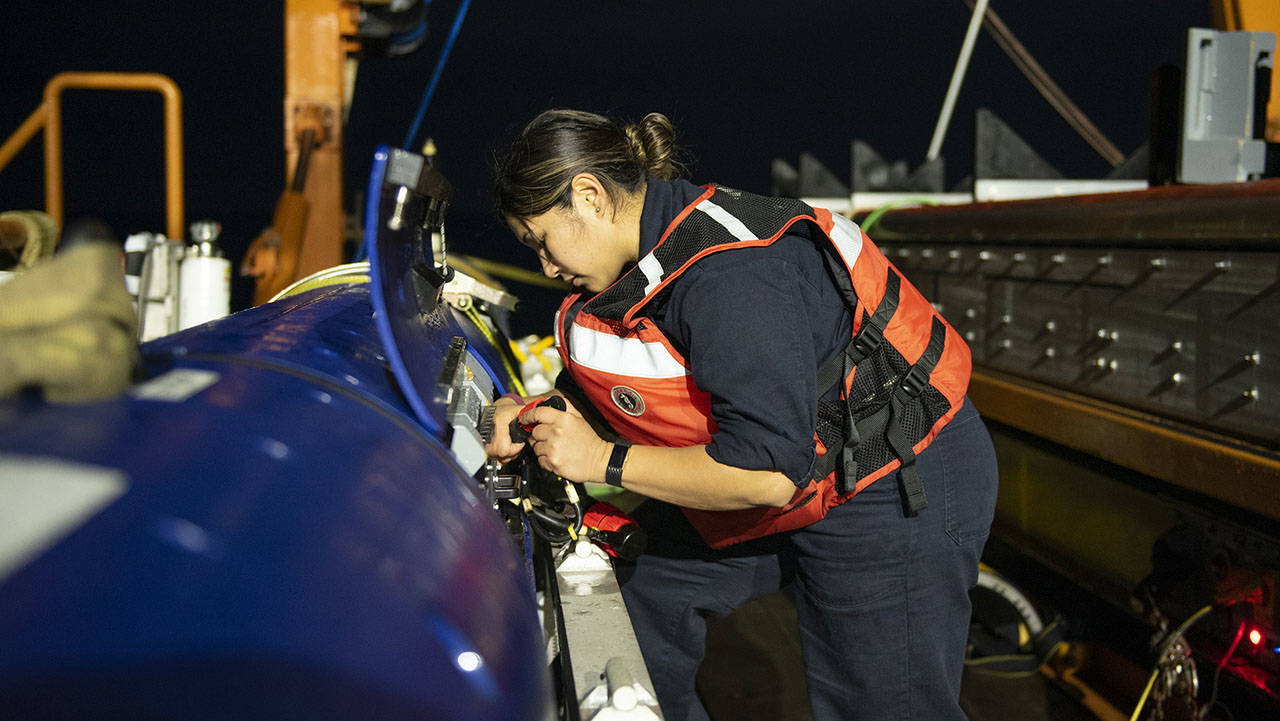Chief Mineman Camaryn Heyer performs a maintenance check on the Knifefish Unmanned Undersea Vehicle (UUV) after a mission during an operational test. Knifefish is a medium-class mine countermeasure UUV designed for deployment off the U.S. Navy's Littoral Combat Ship. (Image Credit: U.S. Navy)
Our autonomous Unmanned Underwater Vehicles (UUVs) are designed for a variety of naval missions including intelligence gathering, mine-hunting, scientific exploration, and ship hull inspection. In the following op-ed in Ocean News & Technology Magazine, Paul Dalton, Vice President of Undersea Systems at General Dynamics Mission Systems, describes how improving undersea communication and data exfiltration systems on UUVs will support the Navy's future missions.
Since the end of the Cold War, the United States’ undersea superiority has been one of the greatest differentiators between the US and our near peer adversaries. Deliberate investment in our undersea power, data and sensing networks created the substantial capabilities that continue to play an integral role in our nation’s defense strategy. Over the past 15 years, our near peer adversaries have significantly narrowed the capability gap, and the U.S. Navy decided to change the way we thought about our undersea superiority in light of these emerging threats.
UNMANNED SYSTEMS
In recent years we have seen an increased focus on the development and integration of unmanned systems on and under the sea, and this unmanned system capability is integral to the Navy’s strategy going forward. From the just released Department of the Navy Unmanned Campaign Framework “Today’s global security environment has seen a return to Great Power Competition. This shift has placed the Department at an inflection point, and we cannot continue with a traditional force structure in the face of new warfighting demands. Unmanned systems will increase lethality, capacity, survivability, operational tempo, deterrence, and operational readiness.” The Navy has defined four classes of UUVs scaling from small, or man portable (approximately <9” diameter), to medium (between 9” and 21” in diameter), large (between 21” and 84” diameter) and extra-large (measuring greater than 84” in diameter). The list of mission requirements for the these UUVs has continued to expand from expeditionary intelligence preparation of the environment (IPOE) to more advanced missions in support of intelligence, surveillance, and reconnaissance (ISR), mine-countermeasure (MCM), and antisubmarine warfare (ASW).
ENHANCING NAVAL CAPABILITIES
As technology advances and we develop greater undersea communication and data exfiltration capabilities, and higher density power sources, UUVs will act as distributed sensors and payload delivery platforms in contested areas as part of the future undersea constellation and the distributed maritime operations (DMO) architecture. By defining common requirements for unmanned systems such as standard software or hardware interfaces, singular integrated network requirements, common command and control, logistics processes, and training, the operation of and shared intelligence from UUVs will seamlessly integrate across the entire maritime domain. The integration of UUVs and all unmanned systems will aide in the implementation of a comprehensive naval operational architecture and help secure our maritime superiority today and into the future.
INFLECTION POINT
The pace of unmanned systems development has steadily increased over the last decade and we are approaching a pivotal inflection point that will see unmanned maritime systems integrated across naval operations—in the air, on the surface and undersea. The development of autonomous capabilities, networks and major platforms that support distributed unmanned assets, and common processes and policy that underlie their adoption and operation, will allow UxVs to serve as the necessary force multiplier our nation needs to face its current threats. UUVs represent the necessary extension of this transition to our most critical military differentiator in undersea warfare capabilities, and so we must continue to rapidly mature and deploy these capabilities to pace the threat and maintain our undersea superiority.
Reproduced with permission from Ocean News & Technology Magazine. Read the full article here.





